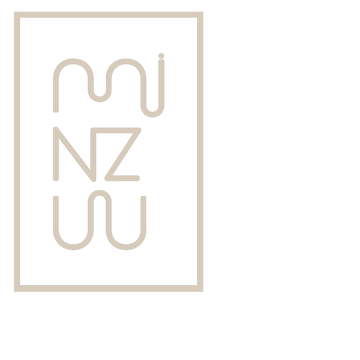Interview: Jigisha Petal
It was in Paris when we first came across
the incredibly soft and charming textiles
by UNNU. Out of the oldest known fabric
of wool felt, Jigisha Petal, who spent years
studying painting, printmaking and textile
design, conjured up a visual feast in water-
color-like hues with subtle gradations.


WE LOVE THE NAME "UNNU".
WHAT DOES IT STAND FOR?
The word unn means wool in a lot of languages in India. I am from Gujarat, the western region of India, where we call the summer season unnalo, a word stemmed from the word unnu.
Unnu means warm. One obvious reason for choosing this name is that I work with wool, a fiber synonymous with warmth. Textiles, often used as covers, give us a sensation of warmth. They are also capable of breaking the visual monotony, and lending a different meaning to any space. The word unnu arouses a feeling of warmth, which I always associate with textiles.
WHY DO YOU CHOOSE FELT TO
MATERIALIZE YOUR DESIGN CONCEPTS?
Felting is practiced in India as a traditional craft, although it has been vanishing due to the intensive labor requirement in the hand-felting process. New technologies, on the other hand, have only been applied to industrial productions, from which felt is made in large quantities for industrial uses. I saw an opportunity in this void. The industrial process, which uses steam and mechanical machines, allows one to achieve precision and perfection effortlessly. It has the ability to enhance the beauty and texture created by a hand-felting process - during this process, craft makers carefully place thin wool webs layer upon layer to achieve unique effects.
COULD YOU ELABORATE ON THE PROCESS OF FELTING
USING BOTH TRADITIONAL AND INDUSTRIAL METHODS?
The making of Unnu textiles is practiced with new technologies adapted to enhance the craft practices in felting. The intrinsic nature of felting and the property of wool as a fiber stay unchanged. I use my hands and eyes for the initial process, where it allows me to dream and visualize how I want the woolen webs to form a surface, whether it is a rug, or a throw, or any product. The initial process of handwork allows me to meticulously place the materials, so as to express a certain aesthetic knowing how the felted wool would behave when pressed; then the structure of felt is formed precisely by steam when it’s being pressed by the machines.
This process ensures that each piece I make is unique because of the initial handwork, but also precise in the sense that it keeps the shape, structure, and colors through the steam and pressure. The final product always turns up with the exact image I have pictured it to be.

WHAT TYPE OF WOOL DO YOU SELECT
TO USE IN THIS FELTING PROCESS?
I have tried using various kinds of wool for felting to try out different textures: The local Indian wool, which has a very coarse texture; short fiber merino wool from Australia and South Africa, which is ideal for felting; local wool from Kashmir, which is a cross breed between merino and the local sheep from Kashmir; and also fine lambswool. In addition, I’ve tried mixing wool with other fibers, such as cotton, eri silk, yak, and pashmina.
Felting allows the recycle of very short fibers or noil, which are usually difficult to spin into yarns. I am experimenting to use various types of recycled short fibers to create thin throws and wraps.
HOW DO YOU ADD DYES TO FELT
AND CREATE THOSE OMBRE EFFECTS?
The wool fibers used for felting have to be dyed gently so that they don’t damage. I use special dyes for wool, so the exhaustion happens really well and there is no wastage.
I create the ombre effects on my throws and rugs through layers: Dyes are used only for the topmost layers, which contain merely a few grams of wool; the underneath layers either remain in their natural colors, usually off-white or grey, or are lightly dyed in the same dye bath after the darker shades to achieve a gradation. This process allows the dyes to interact with the natural colors of wool, and brings out a unique beauty to the surface and texture.
SO YOU'RE A VERY HANDS-ON DESIGNER.
Yes, I work differently than other designers in India. Most designers here are not makers, because our textile industry is highly specialized. There is a wide variety of textiles passing down throughout different regions, and each textile maker specializes in his or her own traditional techniques. Designers usually go to textile makers with their drafts, and they collaborate together to see the design take shape on a loom.
I’m both the designer and maker for Unnu. The artistic expression through felt-making can only be possible after understanding how a material behaves through the process, and every time you may still be surprised with the textures and colors that turned out naturally. I like to absorb the nuances that each step of felt making offers, and experiment with the characters of wool in each stage - from raw wool, to the forming of translucent woolen webs, then the soft sheets which can be cut to form various patterns and textures.
This complete involvement, the observations and surprises, adds to my understanding of this craft. I enjoy working with the characteristics of wool, from its rawest form to those thin translucent woolen webs, then I cut soft sheets of felt to form a visual language, of which every element comes from the process of felting and the nature of wool.
MOVING FORWARD, WHAT'S YOUR PLAN FOR UNNU IN THE FUTURE?
I will continue to explore and make really special pieces in felt and other fibers. Also, I wish to involve other traditional textile arts in India in my design - they surely will add to our felt collection and compose a completely new expression.


Interview: MINZUU Photos: UNNU TEXTILES

